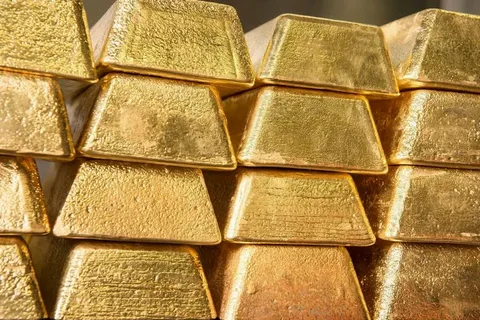The price of gold over 5 years has been subject to significant fluctuations, impacting investors and industries around the world. In this report, we will delve into a comprehensive 5-year analysis of gold price trends, identifying key factors that have influenced its movements. Additionally, we will provide a forecast for the future trajectory of gold prices, offering insights for individuals and businesses looking to navigate the volatile gold market.
The 5-year analysis and forecast of gold prices indicate a long-term upward trend. Over the past five years, gold prices have shown a steady increase, driven by factors such as economic uncertainty, geopolitical tensions, and inflation concerns.
Looking ahead, many analysts and experts believe that gold prices will continue to rise in the coming years, as the global economy faces ongoing challenges. Factors such as loose monetary policies, escalating trade wars, and potential currency devaluations are expected to support the demand for gold as a safe-haven asset.
Furthermore, the increasing interest in gold as a hedge against inflation and currency fluctuations is likely to further drive up its price. Overall, the 5-year analysis and forecast for gold prices suggest a positive outlook for investors and traders looking to capitalize on the potential for further price appreciation in the precious metal.
The Fluctuating Value of Gold: A 5-Year Analysis

The Fluctuating Value of Gold: A 5-Year Analysis is a detailed report that examines the trends and patterns in the price of gold over a five-year period. It delves into various factors that impact the value of gold, such as economic conditions, geopolitical events, and market speculation. The analysis provides a comprehensive overview of the highs and lows of gold prices, offering insights into potential investment opportunities and risks associated with gold trading. Additionally, the report explores the historical context of gold value fluctuations and offers projections for future trends based on the data collected over the five-year period. Overall, this analysis serves as a valuable resource for investors, economists, and anyone interested in understanding the dynamics of the gold market.
Tracking the Rise and Fall of Gold Prices Over 5 Years

Tracking the rise and fall of gold prices over 5 years can provide valuable insights for investors, economists, and policymakers. Gold is often seen as a safe haven asset, with its price influenced by various factors such as inflation, geopolitical tensions, and market volatility.
By analyzing the trend of gold prices over a 5-year period, one can observe how it responds to different market conditions and macroeconomic events. This can help in understanding the dynamics of the gold market and its role in the global economy.
In addition, tracking the rise and fall of gold prices over time can also be useful for individuals and businesses that are directly involved in the gold industry, such as miners, refiners, and jewelers. It can aid in making informed decisions about production, inventory management, and hedging strategies.
Overall, a comprehensive analysis of gold price movements over 5 years can provide valuable information for a wide range of stakeholders, offering insights into market trends, risk management, and investment opportunities.
Understanding the Trends: Gold Price Movements in the Last 5 Years

Understanding the Trends: Gold Price Movements in the Last 5 Years provides an analysis of the factors influencing the fluctuations in the price of gold over the past five years. It explores key events, market trends, and economic indicators that have contributed to the rise and fall of gold prices during this period. Additionally, the report offers insights into the potential future movements of gold prices based on the historical data and current market conditions.
Gold Price Forecast: A Review of the Past 5 Years

The gold price forecast for the past 5 years has shown a general upward trend, with fluctuations in between. In 2017, the price of gold started at around $1,150 per ounce and ended the year at approximately $1,300. In 2018, the price continued to rise, reaching over $1,300 in the first half of the year before dipping down to around $1,200 by the end of the year.
In 2019, the price of gold surged again, reaching a 6-year high of over $1,500 per ounce. This increase was largely driven by global economic and geopolitical uncertainties. The trend continued into 2020, with the price peaking at over $2,000 per ounce during the height of the COVID-19 pandemic.
In 2021, the price of gold experienced some fluctuations, but generally remained above $1,700 per ounce. Factors such as inflation concerns, central bank policies, and ongoing global uncertainties have continued to influence the price of gold.
Looking ahead, experts predict that the price of gold will continue to be influenced by these factors, as well as by the potential for increased demand for safe-haven assets. However, factors such as the pace of economic recovery, Federal Reserve policies, and global geopolitical tensions will also play a significant role in shaping the future trajectory of gold prices.
The Evolution of Gold Prices: A 5-Year Review
The Evolution of Gold Prices: A 5-Year Review is a comprehensive analysis of the fluctuations in the price of gold over a five-year period. The report delves into various factors that have influenced the movement of gold prices, including economic trends, geopolitical events, and market speculation. It provides a detailed breakdown of the highs and lows experienced by gold during this time, offering valuable insights for investors and industry professionals. Additionally, the report also discusses potential future trends and projections for the price of gold based on the analysis of past data.
Analyzing the Volatility of Gold Prices Over 5 Years
See also: gold detector metal
Analyzing the volatility of gold prices over a 5-year period involves examining the fluctuations and variability in the market value of gold during that time frame. This analysis typically involves statistical measurements such as standard deviation and beta, as well as charting historical price movements to identify patterns and trends. Factors such as geopolitical events, economic indicators, and changing investor sentiment can all contribute to the volatility of gold prices, making it a complex and dynamic area of study for investors and analysts. By understanding and analyzing the volatility of gold prices, market participants can make more informed decisions about trading and investing in this precious metal.
Gold Price History: A Look at the Last 5 Years
Gold prices have fluctuated significantly over the last 5 years. In 2016, gold prices started the year at around $1,060 per ounce and ended the year at around $1,150. In 2017, prices saw a slight increase, reaching around $1,250 per ounce by the end of the year. However, in 2018, prices began to decline and ended the year at around $1,280 per ounce.
The year 2019 saw a significant increase in gold prices, with the metal reaching over $1,550 per ounce by the end of the year. In 2020, gold prices surged to new record highs, exceeding $2,000 per ounce due to the economic uncertainties caused by the COVID-19 pandemic.
Overall, gold prices have experienced both ups and downs over the past 5 years, influenced by various economic and geopolitical factors.
The Economic Impact: 5 Years of Gold Price Data
The economic impact of 5 years of gold price data is significant for various industries and economies around the world. Gold prices serve as a barometer for global economic health, as they are often seen as a safe-haven investment during times of economic instability.
The data can provide insights into inflation, interest rates, currency fluctuations, and geopolitical tensions, which can all affect the price of gold. For example, when inflation rises, the price of gold generally increases due to its status as a hedge against inflation.
The data also has an impact on the mining industry, as it can influence decisions regarding exploration, production, and investment in new mining projects. Additionally, the jewelry industry is affected by changes in gold prices, as it can impact consumer demand for gold jewelry.
Furthermore, the price of gold has an impact on central bank reserves and government policies, as many countries hold gold as part of their foreign exchange reserves. Fluctuations in gold prices can therefore affect a country’s monetary policy and overall financial stability.
Overall, the economic impact of 5 years of gold price data is far-reaching and can have implications for various sectors of the economy.
Gold Price Patterns: Reflections on the Past 5 Years
Gold price patterns over the past five years have shown a mix of fluctuation and stability. The price of gold peaked in 2020 amid global uncertainties, reaching a record high of around $2,000 per ounce. This surge was largely driven by economic uncertainties and the COVID-19 pandemic, which prompted investors to seek safe-haven assets like gold.
Prior to this peak, gold prices had been relatively stable, hovering around the $1,200 to $1,400 range from 2016 to 2019. However, gold experienced a gradual uptrend during this period, reflecting a growing interest in the metal as a store of value and hedge against inflation.
Looking back further, the 5-year gold price pattern also reveals a significant drop in prices from 2013 to 2015, when gold fell from its peak of over $1,800 to around $1,000 per ounce. This decline was attributed to factors such as a strengthening US dollar and the anticipation of interest rate hikes by the Federal Reserve.
Overall, the past 5 years have demonstrated the resilience of gold as an investment option, with its price patterns reflecting a response to global economic and geopolitical events, as well as shifts in investor sentiment.
Lessons Learned: Gold Price Trends Over the Last 5 Years
Lessons Learned: Gold Price Trends Over the Last 5 Years examines the fluctuations in the price of gold from 2017 to 2021. The report delves into the various factors that have influenced these trends, such as economic conditions, geopolitical events, and market speculation. Additionally, it offers insights into how these trends have impacted investors, industries, and global trade. The analysis aims to provide valuable lessons for individuals and organizations seeking to understand and navigate the dynamics of the gold market.
In conclusion, the analysis of gold price trends over the past 5 years has provided valuable insight into the factors influencing the fluctuation of gold prices. With a forecast indicating a potential rise in gold prices in the coming years, investors and stakeholders should closely monitor the price of gold over 5 years to make informed decisions about their gold holdings.
See also
https://www.veracash.com/fr/cours-or
https://www.bdor.fr/cours-or
https://www.gold.fr/